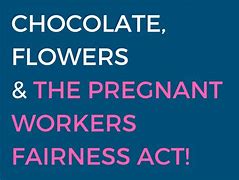Below is a review of the posts (on Facebook, LinkedIn, and Twitter) from the past week. You can check out the full posts by clicking on the links.

The post on Sunday 3/19/2023 told us a construction worker sued employers for directing him to use ‘colored door’. An African American construction worker has filed a lawsuit against Rosenblum Development and AJS Masonry, a concrete and masonry contractor in Clifton Park, New York, that his union had assigned him to work for in September 2022. AJS was Rosenblum’s subcontractor. Why was the suit filed? The plaintiff alleges that Rosenblum’s superintendent told him he had to use the “colored” entrance to go into a breakroom to use the microwave to heat his lunch at a jobsite where apartments were being built. But there was more to the super’s comments – see the post. The plaintiff also said in the suit that he was so distraught that he first went to sit in his car, and eventually left the work site.
Let’s look at the Title VII suit a bit more. The plaintiff alleges that the conduct by Rosenblum and AJS was “so extreme and outrageous as to go beyond all possible bounds of decency and utterly intolerable in a civilized community.” As to the emotional distress caused – see the post. Rosenblum told the media that it fired the superintendent after learning about what happened and investigating. And AJS’s media response? See the post.
TAKEAWAY: Will this (horrible but) single incident be sufficient for liability and damages to lie? Stay tuned.

The post on Monday 3/20/2023 was about the Pregnant Worker Fairness Act vs. FMLA: Where do they intersect? The PWFA was enacted in December 2022 with a delayed effective date; that way, both employees and employers have time to prepare and to know their rights and obligations once it becomes effective. Both statutes can address childbirth and preparations before and care after, The FMLA provides up to 12 weeks of unpaid job-protected leave; in contrast, the PWFA provides on-the-job accommodation (and thus is perhaps more similar to the ADA). But all 3 should be viewed together for eligible employees. What are some conditions of pregnancy that might now be dealt with by the PWFA? See the post. One accommodation that might be requested and would be easy for an employer to provide is a different chair. Other common ways an employer might be asked to accommodate a pregnant worker are in the post. As with other accommodations under the ADA, accommodation under the PWFA should be an interactive process that might include leave (but see the post).
TAKEAWAY: The PWFA is effective June 2023 so make sure you know the law – talk to an employment lawyer and refer to the forthcoming EEOC Guidance on the PWFA.

The post on Tuesday 3/21/2023 noted condo & HOA community managers free to campaign for election candidates – but should they? Some states have laws that govern what information ballots can and cannot contain about a candidate and who can participate in an election campaign. Others (such as PA) do not and so it is left up to the individual associations. Most probably do not deal with these issues but just have a normal course of proceeding for their elections. The post contains a few court decisions on electioneering but were in states with relevant laws. They still provide a bit of a roadmap for associations in states without applicable laws.
TAKEAWAY: Associations should consider whether to add a provision in the contract with their management agent that prevents the manager from campaigning for any candidate; advice from a community association lawyer would be helpful to the candidate or Board.

The post on Wednesday 3/22/2023 told us the EEOC sued United Labor Agency for disability discrimination (against female employee with breast cancer). ULA is a non-profit that focuses on workforce development, The EEOC’s suit was filed February 15, 2023. The suit alleges that after ULA required employees to return to in-person work after a long period of COVID-related telework, the employee requested an ADA accommodation (detailed in the post). The request was denied. You’d think that was the end of the story, right? Nope. After being required to return to the office, the employee was repeatedly left off staff emails (that were pretty important to her given their content – see the post). The employee, who had been with ULA for nearly a decade, was finally forced to resign because of the risk to her health, the EEOC alleged in its suit filed after conciliation failed. The suit seeks back pay, compensatory and punitive damages (plus equitable relief).
TAKEAWAY: Employers must know their obligations under the ADA, including the reasonable accommodation process and what qualifies as undue hardship for it.

In the post on Thursday 3/23/2023 we saw a Court tosses Title VII retaliation claim by investigator for university’s DEI office. The case was filed in federal court in Virginia by Valerie Dufort against Liberty University. Dufort’s office handled reports from students and employees of alleged discrimination, harassment or sexual misconduct; office investigators (including Dufort) analyze evidence and conduct interviews before writing a draft investigation report on the findings.
In April 2019, Dufort conducted an initial interview with Student A, a male Liberty University student who claimed his then-girlfriend — Student B — “assaulted him when she became angry at him.” The post contains findings from the investigation’s opinion. The office’s Executive Director, Nate Hopkins, alleged that when they spoke early on, Dufort said “she was going to be able to prove that what Student A was saying was true,” a statement Dufort denied making. Hopkins then approved a Title IX investigation to proceed with Dufort as the investigator. Following an interview with Student B (about which more information is in the post), Dufort told Hopkins the student was likely to file a counter complaint. But then in an email to Student A, Dufort said something a bit different; see the post. Dufort then emailed her draft investigation report to Hopkins in May 2019 (which was later reviewed by Student B and her attorney). Student B sent evidence to Dufort following the review supporting her story and did assert a counter complaint against Student A. When Hopkins informed Student A of the counter complaint, he became upset because of what Dufort had told him. After reviewing the email from Student A, Hopkins told both students that Dufort was removed from the case and a new investigator was assigned. At a meeting follow-ing her removal, Dufort “expressed concerns about Hopkins’ discriminatory treatment of Student A.” Dufort actions thereafter (see the post) resulted in a verbal disciplinary action from Hopkins in August 2019. Student A filed a complaint against the office in October 2019, alleging gender discrimination and retaliation stemming from the Title IX investigation. Hopkins then cut Dufort out of office business. Hopkins later sought to terminate Dufort’s employment, but was advised to wait (for the reason in the post). After an investigation that proved allegations unfounded (yes, details are in the post), Dufort eventually resigned in June 2020.
So, what is Dufort’s suit about? She alleged that she engaged in protected activity under Title VII “by opposing an unlawful discriminatory practice” (which is described in the post). She also included a retaliation claim, also under Title VII. Liberty University moved for summary judgment. The Judge agreed in January 2023. The judge said that Title VII isn’t a “general bad acts statute.” The key, however, was the statute under which Dufort brought suit – see the analysis in the post.
TAKEAWAY: Know which law applies to which people and conduct. Get competent advice from an employment lawyer.

The post on Friday 3/24/2023 asked: Can my HOA (or condo association) do that? Tree cutting and more. The story goes (true or not) that a homeowner’s association (HOA) told an owner that a dead tree had to be removed. The owner had professionals come and remove the tree, and then received a fine from the HOA because the owner hadn’t gotten permission from the HOA to remove the tree. What condo and homeowner associations can or cannot do is important to the many who own property and live in community associations – more than 40 million people at last count. Keep in mind that condo and homeowner associations; all have 3 things in common: mandatory and automatic membership that starts with home ownership in the designated community and the other 2 notes in the post. While the purpose of rules and regulations in any given community is generally to ensure that the owners maintain their property and thus local property values, the reach can be very broad as noted by some examples in the post. The association might also have rules and regula-tions that go above and beyond municipal (state or local) statutes or ordinances. But that regulation and uniformity – and the other varied services provided – are what the owners pay for by monthly or other periodic assessment. Owners should also keep in mind that the rules and regulations (or other restrictions) that are in place when they buy their home in a community association might change in the future despite their objection, but they will be bound to adhere to the changes.
TAKEAWAY: Life in a community association has pros and cons – a knowledge-able community association lawyer can be a huge help to owners and Board members in interpreting and enforcing the Governing Documents and applicable laws.

Finally, in the post yesterday 3/25/2023, we read about a Performance Improvement Plan (PIP): Employer guide and template. Why should a PIP be used? To provide an opportunity to an employee to improve performance rather than facing an adverse action, including termination. PIPs can address many deficiencies such as those listed in the post. The starting point is to recognize that a PIP is a written action plan, often a last resort. It should be detailed and include what the problem(s) is/are and the expectations for improvement (and the time frame). Other things that might be in a PIP are also noted in the post. A PIP is NOT a warning – how they differ is discussed in the post. As noted, a PIP is often a last resort, and employers normally follow some or all of the steps identified in the post prior to putting in place a PIP. When developing a PIP, an employer should try to include SMART goals – what that acronym means is detailed in the post. That will be beneficial to both the employer and employee. A simple PIP temple is also in the post as well as what can happen at the end of a PIP (which of course depends on performance).
TAKEAWAY: Employers should have a defined policy that addresses poor performance; a PIP might be one of, probably the last, step in that policy.

 York, Pennsylvania 17403
York, Pennsylvania 17403